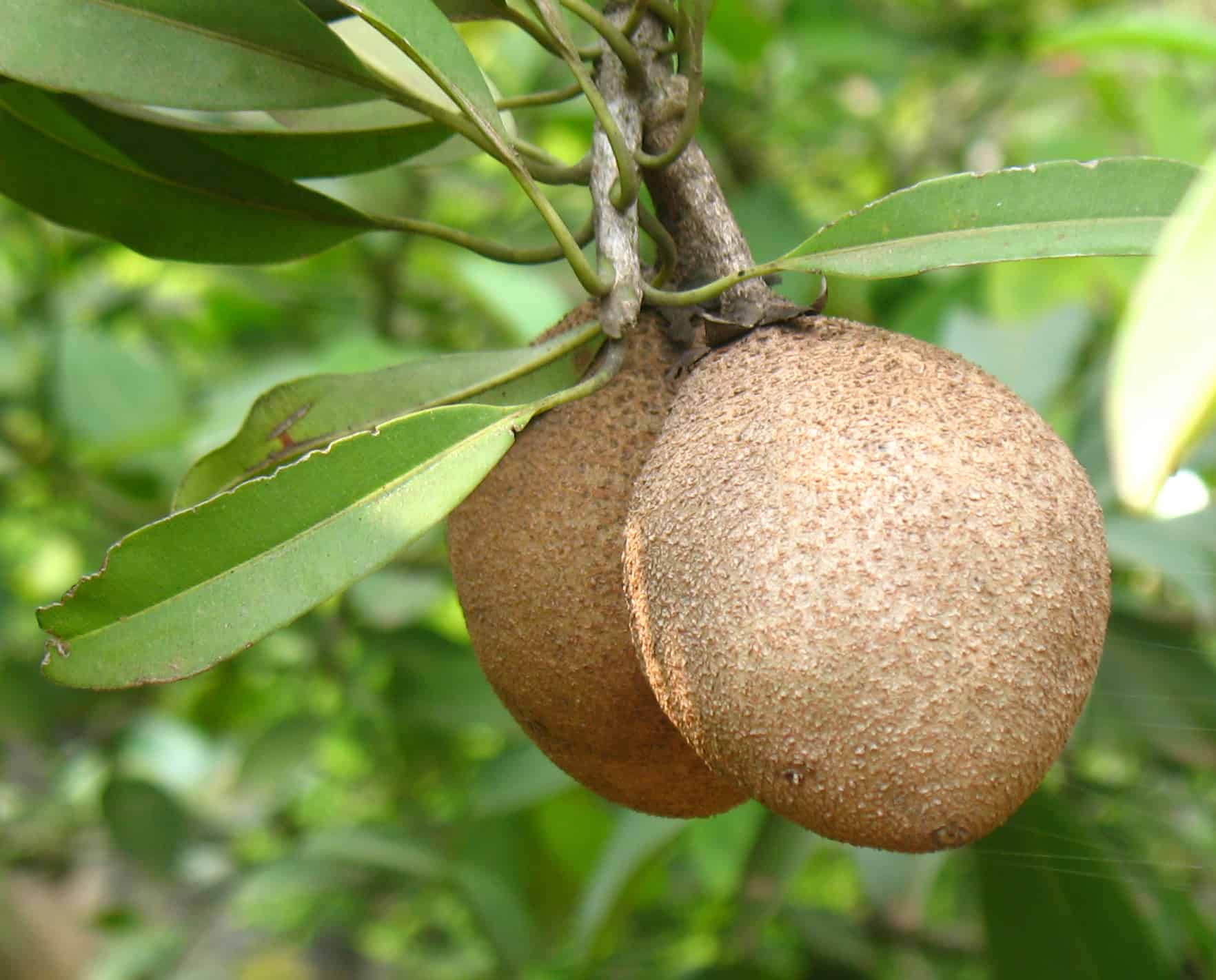Here is another special rare tropical fruit tree that can be grown at home in Costa Rica: sapodilla, or chicle zapote in Spanish, a native tree in our region.
Besides being perhaps one of the best-tasting tropical fruits, sapodilla has a unique history. Much like the native rubber trees of South America, sapodilla trees were once exploited for the white, gummy latex that was harvested from the trunks of these trees to make – you guessed it – chicle, or chewing gum.
The dried latex was chewed by the Mayas and was introduced to the United States by Gen. Antonio López of Mexico in 1866, while he was visiting that country. He had a supply for chewing and gave some to Thomas Adams, a U.S. druggist, who later launched the chewing gum industry. For many years it was employed as the chief ingredient in chewing gum, but it has now been replaced by synthetic gums.
Sapodilla is found in forests throughout Central America and Mexico, and is now cultivated in most tropical regions of the world. It grows well in warmer regions of the country at elevations up to 1,500 m.
Sapodillas grow best in well-drained soils, particularly those high in limestone; however, loamy clay soils also serve well. Seeds are usually used for propagation, although commercial plantings often use grafting, air layering or stem cuttings. Grafted trees produce fruit in three to five years, whereas seedling trees may take five to eight years.
Sapodilla trees are in production in Costa Rica and the fruits can be found at farmers markets across the country, so this is a good time for gardeners to scout out sapodillas for a taste test and to acquire seeds for planting.
For a real treat, try eating a ripe sapodilla chilled. Simply cut it in half and eat the pulp with a spoon. It is an ideal dessert fruit, because the outer skin remains firm enough to serve as a “shell.”
The seeds can be planted in plastic nursery bags or recycled containers with prepared potting soil. When the seedling trees reach about 30 to 40 cm in height, transplant them to permanent sites with good sunlight and well-drained soil. Additions of aged compost fertilizer and limestone will help boost their growth rate. In general, sapodilla trees remain supremely healthy with little or no care.
Author Ed Berhardt – 2011

